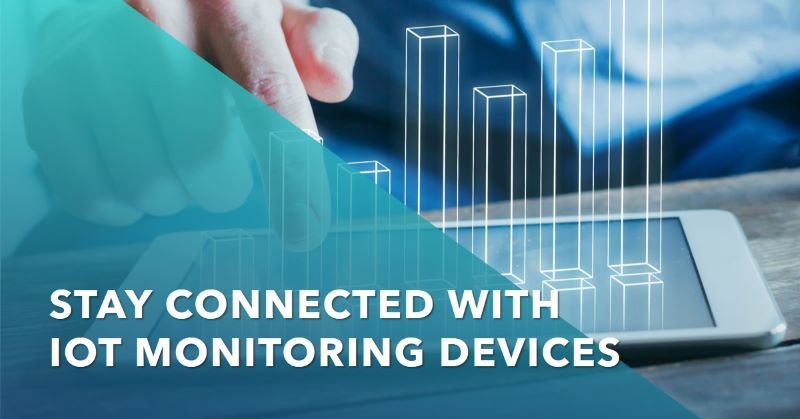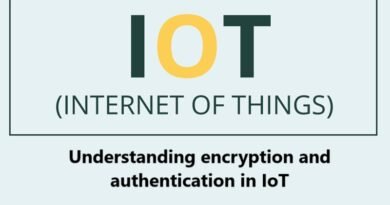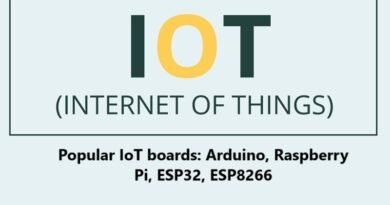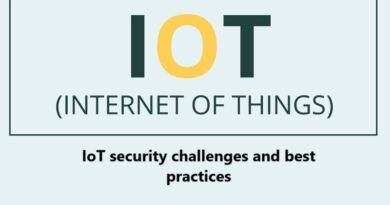How IoT Monitoring Devices Ensure Optimal Performance in Present Day Industry and Technology
What is IoT?
IoT, or the Internet of Things, refers to the network of physical devices, vehicles, appliances, and other objects embedded with sensors, software, and connectivity that enables them to connect and exchange data over the internet. These devices collect and transmit data, allowing them to be remotely monitored, controlled, and managed.
What is IoT Monitoring?
IoT monitoring involves the use of IoT devices and technology to collect and analyze data from various connected devices. It allows businesses and industries to monitor and manage their operations, assets, and processes in real-time, ensuring optimal performance and efficiency.
How IoT Monitoring Devices Ensure Optimal Performance
IoT monitoring devices play a crucial role in ensuring optimal performance in present-day industry and technology. Here are some ways in which they achieve this:
1. Real-time Data Collection and Analysis
IoT monitoring devices collect vast amounts of data from connected devices, sensors, and systems. This real-time data collection enables businesses to gain valuable insights into their operations, identify potential issues, and make data-driven decisions to optimize performance.
2. Proactive Maintenance and Predictive Analytics
By continuously monitoring the performance of devices and equipment, IoT monitoring devices can detect anomalies and potential failures in advance. This allows businesses to implement proactive maintenance strategies, reducing downtime and optimizing performance. Additionally, predictive analytics algorithms can analyze historical data to forecast future trends and make informed decisions.
3. Remote Monitoring and Control
IoT monitoring devices enable remote monitoring and control of connected devices and systems. This means that businesses can monitor and manage their operations from anywhere, at any time. Remote monitoring allows for immediate response to issues, reducing the need for physical intervention and minimizing downtime.
4. Energy Efficiency and Cost Savings
IoT monitoring devices can help businesses optimize energy consumption and reduce costs. By monitoring energy usage in real-time, businesses can identify areas of inefficiency and implement measures to reduce energy waste. This not only improves sustainability but also leads to significant cost savings.
5. Enhanced Safety and Security
IoT monitoring devices enhance safety and security in various industries. For example, in manufacturing, IoT devices can monitor equipment performance and detect potential safety hazards. In healthcare, IoT monitoring devices can track patient vitals and alert healthcare providers in case of emergencies. By providing real-time monitoring and alerts, IoT devices help prevent accidents, improve security, and ensure the well-being of individuals.
6. Streamlined Operations and Improved Efficiency
IoT monitoring devices streamline operations by automating processes and providing real-time insights. They enable businesses to monitor multiple devices and systems simultaneously, reducing manual effort and human error. By optimizing workflows and improving efficiency, businesses can achieve higher productivity and better overall performance.
The Best IoT Monitoring Device Tools
Let’s explore some of the best IoT monitoring device tools currently on the market:
Senseye PDM
Senseye PDM is a powerful IoT monitoring device tool that provides real-time insights into the performance and health of your IoT devices. With its advanced analytics and predictive maintenance capabilities, Senseye PDM can help you identify potential issues before they become major problems. This tool also offers customizable dashboards and alerts, allowing you to easily track and manage your devices from a single interface.
Skyspark
Skyspark is another top-notch IoT monitoring device tool that offers comprehensive monitoring and analytics capabilities. With its advanced data analysis algorithms, Skyspark can help you identify patterns and anomalies in your IoT device data, allowing you to make informed decisions and optimize your operations. This tool also integrates with other systems and platforms, making it easy to incorporate into your existing IoT infrastructure.
AWS IoT Monitoring Device Management
As one of the leading cloud service providers, Amazon Web Services (AWS) offers a robust IoT monitoring device management solution. With AWS IoT, you can easily onboard, monitor, and manage your IoT devices at scale. This tool provides real-time metrics and alerts, enabling you to proactively monitor the health and performance of your devices. Additionally, AWS IoT integrates seamlessly with other AWS services, allowing you to leverage the full power of the cloud for your IoT deployments.
Datadog IoT Monitoring
Datadog is a popular monitoring and analytics platform that also offers comprehensive support for IoT devices. With Datadog IoT monitoring, you can collect and analyze data from your devices in real-time, gaining valuable insights into their performance and behavior. This tool provides customizable dashboards, alerts, and anomaly detection, making it easy to track and manage your IoT devices effectively. Datadog also offers integrations with other tools and platforms, allowing you to create a centralized monitoring solution.
TeamViewer IoT
TeamViewer IoT is a versatile IoT monitoring device tool that allows you to remotely monitor and manage your devices from anywhere. With its secure and reliable connection, TeamViewer IoT enables you to access and control your devices in real-time, making troubleshooting and maintenance tasks more efficient. This tool also offers advanced features such as remote firmware updates and device configuration, providing you with full control over your IoT deployments.
Understanding the Challenges of IoT Monitoring
Before we delve into the solutions, let’s first understand the challenges that come with IoT monitoring. These challenges include:
- Scalability: As the number of IoT devices increases, managing and monitoring them becomes a daunting task. Traditional monitoring solutions may not be able to handle the scale and complexity of IoT deployments. It becomes crucial to have a monitoring system that can handle a large number of devices and provide real-time insights.
- Connectivity: IoT devices rely on network connectivity to transmit data and receive commands. However, maintaining a reliable and secure connection can be challenging, especially in remote or harsh environments. Monitoring the connectivity status of each device becomes essential to ensure smooth operations.
- Data Management: IoT devices generate vast amounts of data, and managing and analyzing this data can be overwhelming. It is crucial to have a robust data management system in place to collect, store, and process the data efficiently. Without proper data management, valuable insights may be lost, impacting decision-making and troubleshooting.
How IoT Monitoring Devices Simplify the Process
IoT monitoring devices are specifically designed to address the challenges mentioned above. Let’s explore how these devices simplify the IoT monitoring process:
1. Centralized Monitoring and Management
IoT monitoring devices provide a centralized platform to monitor and manage a vast number of connected devices. These devices offer a user-friendly interface that allows users to view real-time data, set alerts, and perform remote diagnostics. With a single dashboard, users can monitor the health, performance, and connectivity status of all their IoT devices.
2. Connectivity Monitoring and Troubleshooting
IoT monitoring devices enable proactive monitoring of device connectivity. They can detect and alert users about any connectivity issues, helping them troubleshoot problems before they escalate. These devices provide insights into signal strength, network latency, and packet loss, enabling users to optimize network performance and ensure a seamless connection.
3. Advanced Data Analytics
IoT monitoring devices come equipped with advanced data analytics capabilities. They can collect and analyze data from multiple devices, providing valuable insights into device performance, usage patterns, and anomalies. This data-driven approach helps users identify potential issues, predict failures, and optimize device performance. With actionable insights, businesses can make informed decisions and improve overall operations.
Choosing the Right IoT Monitoring Device
When selecting an IoT monitoring device, consider the following factors:
- Scalability and Flexibility: Ensure that the device can handle the scale of your IoT deployment. It should be able to monitor a large number of devices simultaneously. Additionally, look for a device that can adapt to different IoT protocols and technologies, providing flexibility for future expansions and integrations.
- Connectivity Options: Check if the device supports various connectivity options, such as Wi-Fi, cellular, or Ethernet. This ensures compatibility with different IoT networks and environments. Additionally, consider the device’s ability to handle secure connections and encryption protocols to safeguard your data.
- Analytics and Insights: Evaluate the device’s analytics capabilities. Look for features like real-time data visualization, customizable dashboards, and predictive analytics. These features will help you gain meaningful insights from your IoT data and drive informed decision-making.
Challenges with IoT Monitoring Devices
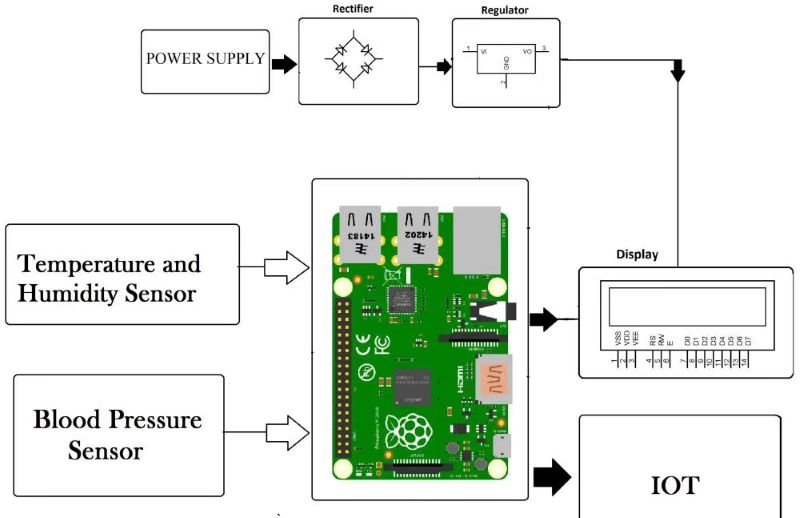
An IoT device relies heavily on its onboard CPU, a critical component that facilitates its connectivity to the internet. This internet-enabled processor ensures that IoT devices remain accessible from any location. However, this connectivity also exposes them to potential vulnerabilities. Any device connected to the internet becomes susceptible to hacking, especially those that can be remotely manipulated by manufacturers.
Security considerations are paramount for IoT device owners. The initial step towards safeguarding these devices is to update their passwords regularly. Furthermore, using unique passwords for each device is essential; employing the same password across all devices compromises the entire network’s security. Once a hacker gains access to the password, they can compromise the entire fleet of devices.
Managing numerous IoT devices presents challenges in generating and remembering unique passwords for each. Hence, automated tools become indispensable for this purpose.
In addition to password management, IoT monitoring technologies play a crucial role in maintaining device security and health. These technologies not only ensure the safety of devices but also monitor their operational status.
IoT devices are intended to streamline operations and reduce costs, but they can also pose risks if improperly configured. IoT services play a vital role in ensuring that IoT infrastructure operates optimally, thus preventing potential disruptions to business operations.
Conclusion
In today’s industry and technology landscape, IoT monitoring devices have become indispensable tools for ensuring optimal performance. By enabling real-time data collection and analysis, remote monitoring and control, and predictive maintenance, these devices help businesses enhance operational efficiency, reduce downtime, and improve decision-making.
As the Internet of Things continues to evolve and expand, the importance of IoT monitoring devices will only grow. Businesses that embrace these technologies stand to gain a competitive edge by unlocking new possibilities for efficiency, productivity, and innovation.
